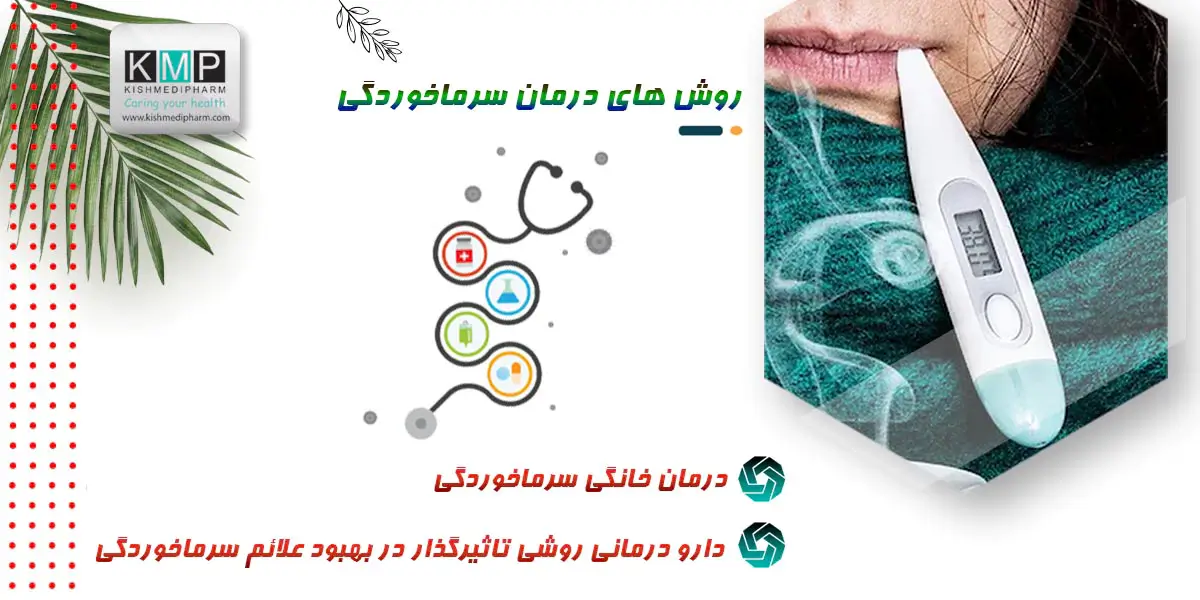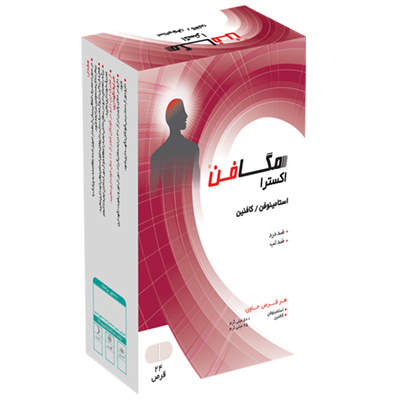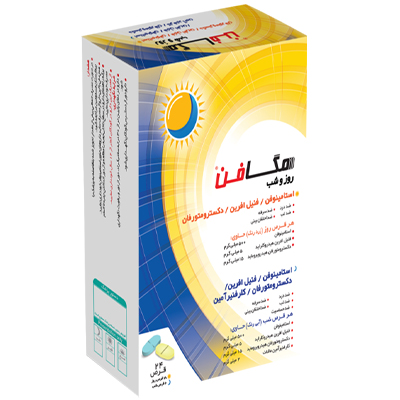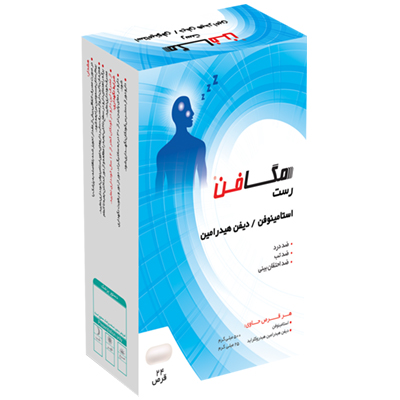The answer to the question, what is a cold? It may be obvious to you, but you should know that a cold can have symptoms specific to each person, and in some cases, the appearance of cold symptoms can be complications caused by another underlying problem. Therefore, correctly diagnosing this problem is very important in choosing cold treatment methods.
Remember, if any disease becomes chronic, meaning it lasts for a long time or continues to progress despite treatment, you should immediately consult a specialist or emergency room. Having a fever or other cold symptoms can indicate one of these chronic diseases. Below, we have outlined some very important points to fully understand and answer what a cold is.
Stages of cold symptoms
A cold is an infectious virus that usually affects the nose, sinuses, trachea, and throat. This virus is contagious and its transmission depends on various factors, so it is very important to follow all hygiene tips when dealing with a person infected with the virus.
There are reportedly about 200 viruses that cause colds, some of which can survive on surfaces for hours to days. The most common of these viruses is called rhinovirus, which causes about 50 percent of colds. Rhinoviruses usually enter the body in three ways:
- Entry into mucous membranes, i.e. eyes, nose, and mouth
- Breathing in humid environments containing viruses
- Touching viral surfaces
Adults typically get colds 2 to 3 times a year, and children 4 or more times. Cold symptoms usually occur in stages and on different days, during which it is possible to observe and deal with new symptoms. As the stage progresses, cold symptoms become more severe and annoying. We will examine the stages of these symptoms in more detail below.
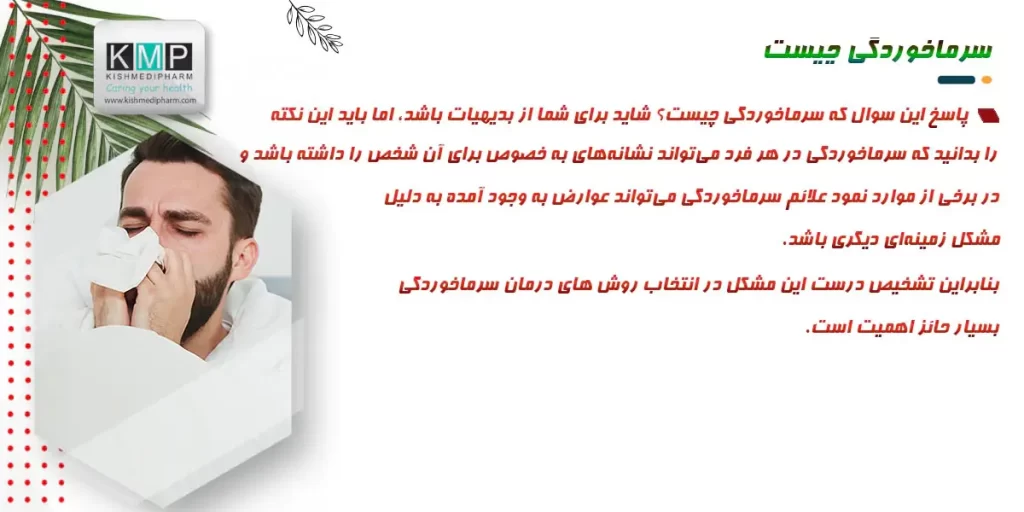
Early stage of cold symptoms
The early stage is the least dangerous of these stages, when cold symptoms are very mild and superficial, so that you may not need to see a doctor. These symptoms usually appear between 1 and 3 days after exposure to the virus, and in general, cold symptoms in the early stage are not very bothersome.
Nasal mucus at this stage may range in color from yellow to green, and this is not necessarily a sign of bacteria in the body, but can be one of the symptoms of a cold in the current stage. These symptoms can include one or more of the following:.
- Feeling Sore throat and itching in the throat area
- Congestion, stuffiness, and runny nose
- Body aches and mild headaches
- Low-grade fever
- Swelling in the lymph nodes
- Coughing or sneezing
- Feeling shivery
The active or secondary stage of cold symptoms
After a few days, typically between days 4 and 7, in addition to the symptoms that occurred in the initial stage, the person will experience secondary or active cold symptoms. These are more severe and bothersome than the initial stage, as either the previous symptoms become more severe or new symptoms develop in addition to the previous cold symptoms with more severe conditions.
According to the opinion and advice of experts, if this stage is reached, one should seek specialized treatment from a doctor who, based on their examination and examination, will measure the severity and level of symptoms and prescribe appropriate medication. Below, we will mention some of the cold symptoms that appear on days 4 to 7 of this physical problem.
- Higher incidence of fever, especially in infants and children
- Body aches and headaches that last longer and are more painful
- Feeling of muscle aches, fatigue, and lethargy
- Sore throat and severe itching in the mentioned area, as well as swollen lymph nodes
Late stage or peak of cold symptoms
At this stage, between days 8 and 10, when cold symptoms become more severe, last longer, and become debilitating, it is essential to seek medical attention. Although the virus can be contagious for up to 2 weeks, the speed and rate of spread of the virus is at its highest during this stage.
It may be interesting to know that the latent period of this disease can be from 12 hours to 3 days, which means that the virus can spread even up to 3 days before the initial stage. In this stage, despite all hygiene tips, home remedies, and medication, the symptoms of the cold do not go away, and the person may feel so tired that they are unable to do any activity.
These symptoms can even indicate more serious illnesses in some cases. Therefore, in these situations, it is imperative to conduct further tests and examinations, in addition to finding ways to treat the cold, to ensure that there is no other illness. Among the illnesses that have symptoms similar to the cold, the following can be mentioned:
- AIDS
- Diphtheria
- Measles
- Influenza
- Bronchitis
- Asthma and allergies
- Corona or Covid 19
- Pneumonia
- Sinusitis or sinus infections
Cold symptoms can range from mild, moderate to severe. Correct diagnosis of the stage and type of illness plays a significant role in choosing between cold treatment methods.
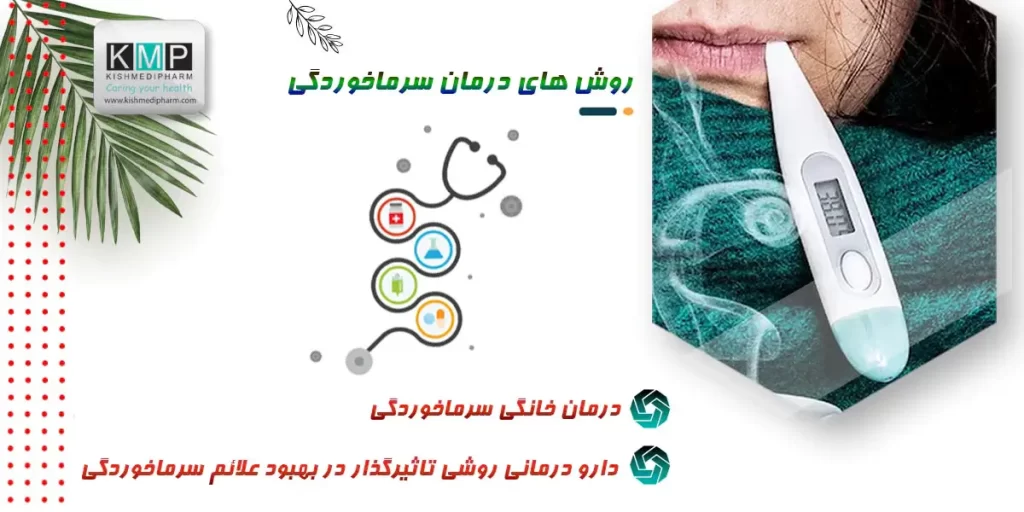
Worsening cold symptoms and seeing a doctor
In many cases, using home remedies for colds can completely improve your physical health, but remember, if you see some symptoms, you should take them seriously. In adults, with home remedies and medication with painkillers, the condition usually returns to normal within 2 to 3 days. Of course, it should be noted that some people have underlying diseases and should see a doctor at the slightest symptom. If you see any of the following symptoms, go to the emergency room and see a doctor immediately.
- Acute and severe earaches
- Intense aversion to the past
- Feeling of extreme fatigue in the body and bones
- Asthma exacerbation, shortness of breath, and difficulty breathing
- Excessive swelling of the throat or lymph nodes
- Fever above 37.5 degrees Celsius in children after 2 days
- Having a fever above 38.5 degrees in adults after 3 days
- Feeling wheezy and tight in the chest area (a sign of high inflammation)
- Mucus coming out with blood or in colors other than yellow or green
- Prolonged or worsening symptoms for more than 10 days despite recommended treatments
- The aforementioned problems and complications occur in the secondary and final stages of a cold.
- If you have chronic diseases and a weak immune system, such as cancer, hepatitis, or AIDS
The importance of treating cold symptoms
In many cases, colds do not require medication or a visit to the doctor, but keep in mind that if these types of problems are not resolved and treated, the person may develop more serious illnesses and complications. Below, we will mention some of the diseases that occur if cold symptoms are not treated.
- Occurrence of heart diseases such as shortness of breath and palpitations
- Secondary infections and inflammations in the tonsils
- Infections in the ears, lungs, and throat
- Pneumonia or bronchitis
- Respiratory allergies
- Asthma
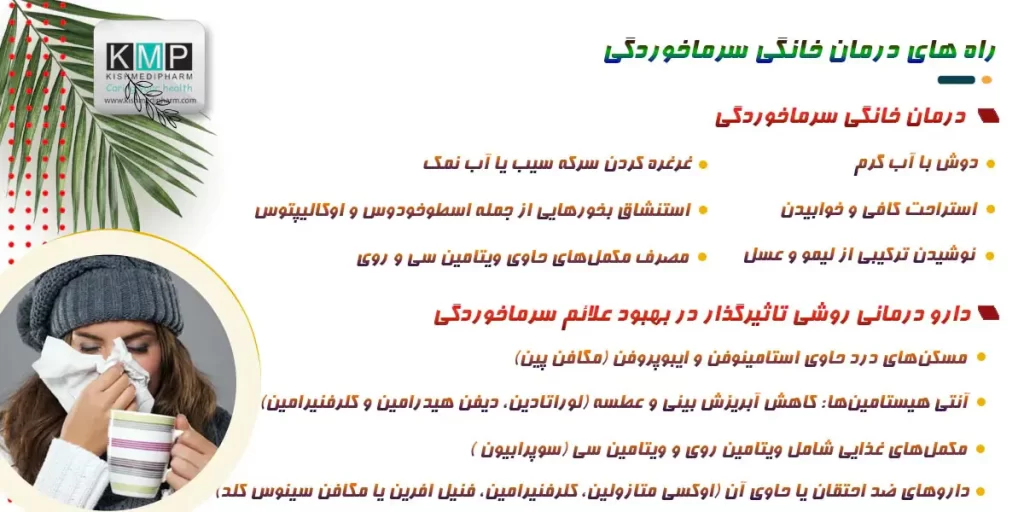
Types of cold treatment methods
Prevention is definitely better than cure, but if cold symptoms occur, especially in the active and severe stages, we need specialized treatment. Although in most cases, if a person does not have an underlying disease, he or she will recover quickly with simple solutions, it is generally better to try simpler treatments at home so that the illness does not prolong the duration and does not disrupt the person's life.
Drug therapy and home remedies for colds are common and simple methods for curing this disease. We will discuss these two methods in more detail below:
Home remedies for colds
Although many colds go away on their own, it is better to shorten the duration of treatment by consuming some foods and simple solutions. Since ancient times, home remedies for colds have been traditionally used by many people, and in addition to strengthening the immune system, if these methods are used routinely, they also prevent diseases such as colds. We will briefly mention some of these home remedies for colds, which are very simple and available to everyone:
- Hot shower
- Get enough rest and sleep.
- Drink a mixture of lemon and honey
- Gargling with apple cider vinegar or salt water
- Taking supplements containing vitamin C and zinc
- Inhaling incense, including lavender and eucalyptus
- Consuming warm drinks, light and hearty soups such as chicken soup
- Adding ingredients like ginger, turmeric, garlic, and red bell pepper
Drug therapy is an effective way to improve cold symptoms.
One of the best, simplest, and most effective treatments is medication. We mentioned above some things to relieve cold symptoms, but for some people, insomnia is one of the problems they face. To have a good night's sleep during illness, you can use Megafen Rest, which contains acetaminophen and diphenhydramine.
The diphenhydramine in Megafen Rest has caused, To experience restful sleep during illness, and another advantage of diphenhydramine is that it does not cause dependence on this compound. Below, we will discuss some of the ways to treat cold symptoms.
- Decongestant medications or containing it (oxymetazoline, chlorpheniramine, phenylephrine, or Megaphen Sinus Cold)
- Antihistamines: Reducing runny nose and sneezing (loratadine, diphenhydramine, and chlorpheniramine)
- Dietary supplements Contains vitamin zinc and vitamin C (Suprabion)
- Pain relievers Contains acetaminophen and ibuprofen (Megafen Pain)
- Cough syrups (dextromethorphan and guaifenesin)
By taking simple measures such as taking an OTC medication such as Megafen Rest, Megafen Pain, or Megafen Sinus Cold, you can easily prevent long-term and chronic cold symptoms.
Examining the 3 main causes of frequent colds in children
You may have wondered why children get colds more often than adults. As we mentioned, the cold virus enters the body in various ways. Usually, the methods of entry into the body are easier for infants and children, and the number of times children get sick is more frequent, especially if the following conditions are repeated:
Since cold treatment methods in children are not as diverse as in adults and can worsen cold symptoms, it is very important to use methods to prevent the disease.
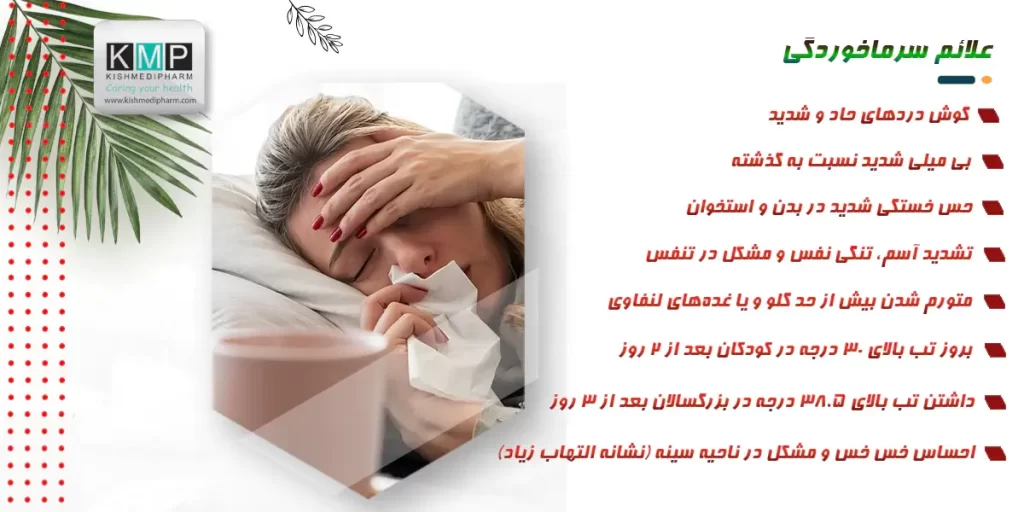
- Children are usually less likely to follow hygiene tips and do not cover their mouths and noses when coughing and sneezing. Failure to observe hygiene can contaminate the surrounding air with viruses. Since children are in close contact with their peers, they are exposed to this polluted air much more than adults.
- If your child's hands come into contact with the environment and viral surfaces and then sit down, there is a high chance that the virus will enter their mouth, eyes, and nose. So remember, in addition to isolating your child from infected people, wash their hands thoroughly more often. Teaching them to follow hygiene tips in general is the best solution to stay safe from these viruses.
- The body of a newborn or child is unfamiliar with viruses and has not yet learned how to deal with them. However, in adults, given that the body is familiar with many cold-causing viruses and the ways to deal with them, it has a greater ability to fight known viruses.
Given the limited treatment methods for colds in children, maintaining hygiene and staying away from people with cold symptoms can be ways to prevent children from catching colds.
Conclusion
In this article, we have tried to fully explain all the points and answers to the question of what is a cold. A cold is a contagious virus that can be transmitted for up to 2 weeks through contact with viral surfaces and breathing in a contaminated environment. Cold symptoms usually occur in the head, nose, trachea, throat and sinuses and can be mild, moderate and severe.
If cold symptoms are severe, prolonged, or bothersome, they should be treated immediately by a medical professional, although people with underlying medical conditions should always be cautious and see a doctor immediately if they experience any of the symptoms.
There are two ways to treat a cold: medication and home remedies. These two methods can help with mild to moderate colds. For example, taking a warm shower, getting enough rest, taking supplements, and buying and taking a painkiller like Megafen Rest, Megafen Sinus Cold, and Megafen Adult Cold can all help speed up the healing process.

